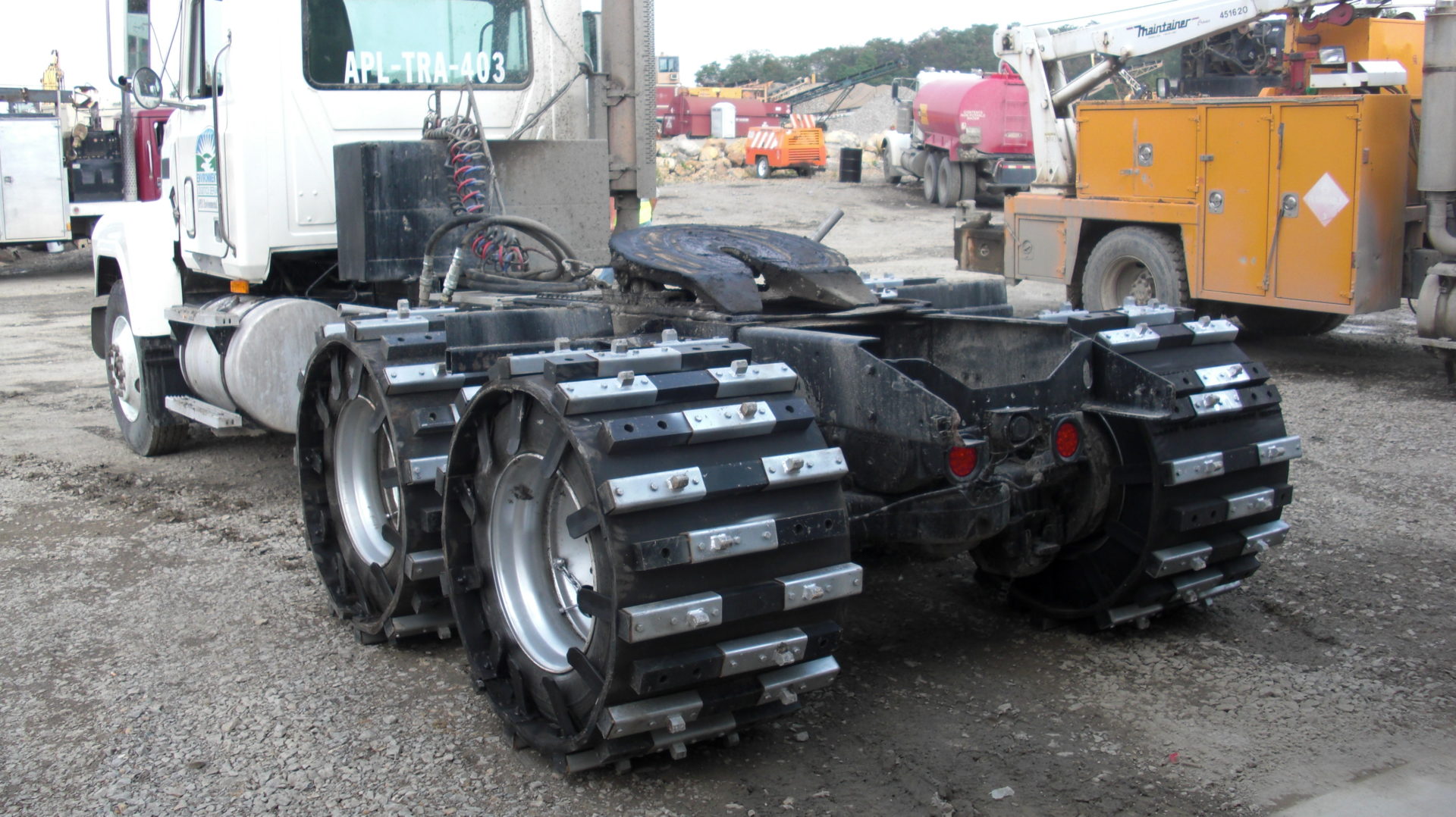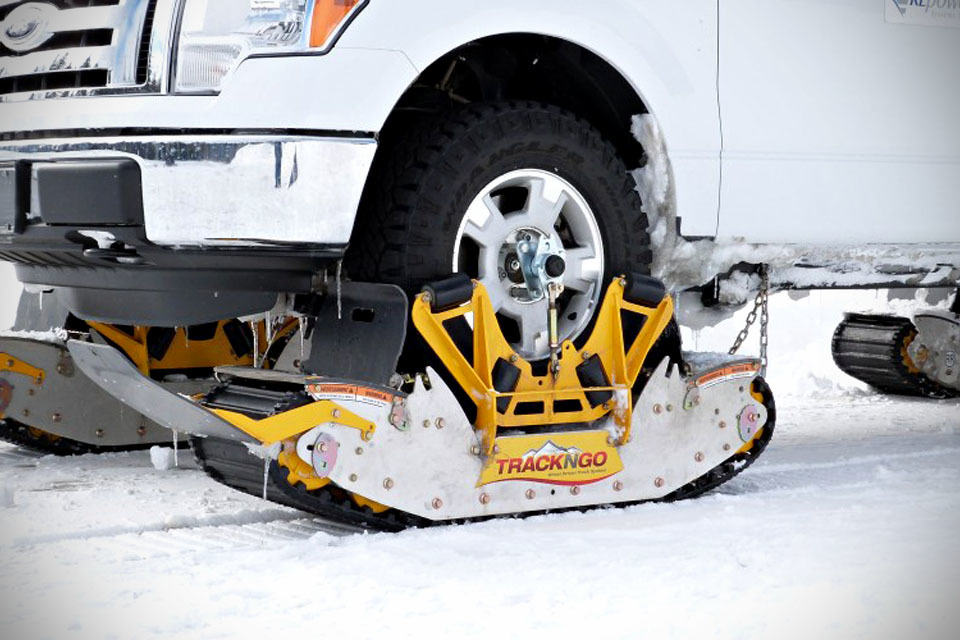Truck Tracks For Sale: Your Ultimate Guide to Unlocking Unstoppable Mobility pickup.truckstrend.com
In the world of utility, adventure, and heavy-duty work, there are terrains that simply laugh at conventional wheeled vehicles. Deep snow, bottomless mud, shifting sands, and rugged rocky inclines can halt even the most capable 4x4s in their tracks. This is where the extraordinary solution of "truck tracks" comes into play. Far beyond mere accessories, truck tracks are comprehensive conversion systems that transform a standard wheeled truck into an unstoppable, all-terrain machine, capable of navigating landscapes previously deemed impassable.
This article serves as your definitive guide to understanding, evaluating, and ultimately acquiring truck tracks for sale. Whether you’re a professional in the utility sector, an avid overlander, a farmer facing challenging seasonal conditions, or an emergency responder needing reliable access, investing in truck tracks can revolutionize your operational capabilities. We’ll delve into what these systems are, their myriad benefits, crucial considerations for purchase, where to find them, and how to make an informed decision, ensuring your next truck is truly ready for anything.
Truck Tracks For Sale: Your Ultimate Guide to Unlocking Unstoppable Mobility
What Are Truck Tracks? Redefining All-Terrain Capability
At their core, truck tracks are specialized conversion systems designed to replace the conventional wheels of a truck with a continuous track system, similar to those found on bulldozers or tanks, but scaled and engineered for vehicle mobility. Unlike traditional tires that concentrate the vehicle’s weight on a small contact patch, tracks distribute the weight over a much larger area, drastically reducing ground pressure. This fundamental difference is key to their superior performance in soft, uneven, or challenging terrain.
A typical truck track system consists of several integrated components:
- Rubber Tracks: These are the continuous belts that provide traction and floatation. Modern systems primarily use durable, reinforced rubber tracks, which are less damaging to surfaces than steel tracks and offer a smoother ride.
- Drive Sprockets: These replace the truck’s wheels and engage with the track’s internal lugs to propel the system.
- Support Frames & Idlers: Robust frames provide structural integrity, housing multiple idler wheels that support the track and guide its movement, ensuring proper tension and alignment.
- Suspension Systems: Many advanced track systems incorporate their own suspension, allowing the tracks to conform to terrain irregularities, enhancing ride comfort and maintaining optimal ground contact.

These systems are engineered to bolt directly onto the truck’s existing hubs, making the conversion reversible (though not a quick roadside swap). The transformation delivers unparalleled traction, flotation, and stability, turning a truck into a true all-terrain workhorse.
Why Invest in Truck Tracks? Unlocking Unparalleled Benefits
The decision to equip a truck with tracks is a significant one, driven by a need for capabilities that traditional tires simply cannot offer. The benefits extend across various applications:
- Superior Traction and Mobility: This is the primary advantage. Tracks provide an enormous contact patch with the ground, offering grip in conditions where tires would spin helplessly. This includes deep snow, thick mud, loose sand, swampy areas, and steep, slippery inclines.
- Reduced Ground Pressure (Flotation): By spreading the vehicle’s weight over a larger area, tracks significantly reduce pounds per square inch (PSI) of ground pressure. This allows trucks to traverse soft, sensitive terrains (like tundra, wetlands, or agricultural fields) without sinking or causing excessive damage, preserving the environment and preventing costly ruts.
- Increased Versatility and Accessibility: A track-equipped truck can access remote work sites, aid in search and rescue operations in disaster zones, navigate challenging trails for recreational purposes, or service utility lines in off-grid locations that are otherwise unreachable.
- Enhanced Safety and Stability: The broad footprint of tracks provides exceptional stability on uneven terrain, reducing the risk of rollovers on side slopes and offering better control in adverse conditions compared to wheels.
- Year-Round Operation: For industries like forestry, oil and gas, and utilities, tracks enable continuous operation through all seasons, including heavy winter snows or spring thaws that would typically halt operations.
- Protection of Vehicle Drivetrain: By preventing wheel spin and distributing load more effectively, tracks can reduce strain on the truck’s axles, differentials, and transmission, potentially extending the lifespan of these critical components.


Types of Truck Tracks Available For Sale
The market for truck tracks offers a range of systems, each designed with specific applications and vehicle types in mind.
- Rubber Track Systems: These are the most common and versatile. They are favored for their relatively lighter weight, lower ground pressure, smoother ride, and reduced damage to paved surfaces (though not intended for extended road use). Brands like Mattracks, American Track Truck, and Camso (formerly Bombardier Recreational Products – BRP) are leaders in this segment, offering systems for light-duty pickups to heavy-duty commercial trucks.
- Steel Track Systems: While less common for trucks due to their weight and potential for surface damage, steel tracks are used on very heavy-duty equipment where maximum durability and traction in extremely abrasive conditions (e.g., rock quarries) are paramount. For truck applications, rubber tracks are almost universally preferred.
- Specialized Application Tracks: Some manufacturers produce tracks tailored for niche uses, such as agricultural tracks designed to minimize soil compaction, or utility tracks built for navigating power line corridors.
- New vs. Used Systems:
- New Tracks: Offer the latest technology, full manufacturer warranties, and guaranteed performance. They are a significant investment but provide peace of mind and access to full support.
- Used Tracks: Can offer substantial cost savings. However, thorough inspection is critical to assess wear on tracks, idlers, sprockets, and frames. Warranty coverage is typically limited or non-existent.
Key Considerations When Buying Truck Tracks
Purchasing truck tracks is a complex decision that requires careful evaluation of several factors to ensure compatibility, performance, and value.
- Vehicle Compatibility: This is paramount. Track systems are highly specific to truck make, model, year, and often even axle type. Factors include bolt pattern, hub clearance, axle weight rating, and drivetrain configuration. Always consult manufacturer compatibility charts.
- Intended Use and Terrain:
- Terrain Type: Will you be primarily in snow, mud, sand, or rocky ground? Different tread patterns and track widths are optimized for specific conditions.
- Load Capacity: Ensure the track system is rated to handle the gross vehicle weight (GVW) of your truck and its typical payload.
- Speed Requirements: Tracks significantly reduce top speed. Understand the operational speed limits of the system you’re considering.
- Track Material and Tread Pattern: Most truck tracks are rubber. However, tread patterns vary widely, from aggressive cleats for mud and snow to more open designs for sand.
- Installation and Maintenance:
- Ease of Installation: While generally designed for bolt-on installation, some systems are easier to mount than others. Professional installation is often recommended for first-time users.
- Maintenance Requirements: Tracks require regular inspection for wear, proper tensioning, and lubrication of components. Factor in the cost and availability of spare parts (e.g., idler wheels, track sections).
- Brand Reputation and Warranty: Research established manufacturers known for quality, durability, and customer support. A robust warranty provides protection against manufacturing defects.
- Budget: Track systems are a substantial investment. Beyond the purchase price, consider installation costs, potential modifications to your truck (e.g., lift kits for clearance), and ongoing maintenance expenses.
- Legal Compliance: In most jurisdictions, track-equipped vehicles are not street legal for extended road use at typical speeds. They are often classified as off-highway vehicles or specialty equipment, requiring trailering to and from work sites. Always check local regulations.
Where to Find Truck Tracks For Sale
Once you’ve defined your needs and criteria, the next step is to explore the market:
- Authorized Dealers: For new track systems, authorized dealers of brands like Mattracks, American Track Truck, Camso, and others are your primary source. They offer expert advice, full warranties, professional installation services, and access to parts and support.
- Manufacturer Websites: Many manufacturers sell directly or list their authorized dealers, providing comprehensive product information and specifications.
- Online Marketplaces: Websites like eBay, Craigslist, and specialized heavy equipment classifieds (e.g., MachineryTrader, IronPlanet) are excellent sources for used track systems. Exercise extreme caution and thoroughly inspect any used system before purchase.
- Specialty Equipment Shows: Trade shows focused on outdoor recreation, utility vehicles, or construction equipment often feature track manufacturers and dealers, offering opportunities to see systems firsthand and discuss options.
- Used Equipment Dealers: Some dealers specialize in used utility vehicles and heavy equipment, and may occasionally have used truck track systems in stock.
The Buying Process: A Step-by-Step Guide
Navigating the purchase of truck tracks requires a systematic approach:
- Define Your Needs: Clearly identify the primary purpose for the tracks, the terrain you’ll encounter, your truck’s specifications, and your budget.
- Research Compatible Systems: Use manufacturer websites and dealer resources to identify track systems specifically designed for your truck’s make and model.
- Get Quotes and Compare: Contact multiple dealers or sellers for pricing. Don’t just compare the sticker price; consider warranty, installation services, and long-term support.
- Inspect (for Used Systems): If considering used tracks, a meticulous inspection is crucial. Look for cracks in frames, excessive wear on rubber tracks (casing separation, deep cuts, missing lugs), play in bearings, and damage to sprockets or idlers. If possible, inspect them mounted on a truck or have a qualified mechanic do so.
- Verify Warranty and Support: Understand the warranty terms for new systems. For used systems, inquire about any remaining warranty or available parts.
- Consider Installation: Decide whether you’ll perform the installation yourself (if you have the expertise and equipment) or factor in professional installation costs.
- Plan for Maintenance: Understand the ongoing maintenance schedule and costs for parts and labor.
Table Price: Estimated Costs for Truck Tracks For Sale
It’s important to note that prices for truck track systems vary significantly based on brand, vehicle compatibility (light-duty vs. heavy-duty), features, and whether they are new or used. The table below provides estimated ranges for new systems and a general idea for used, excluding installation, shipping, and taxes.
| Track Type/Brand Category | Compatible Vehicle Size | Key Features | Estimated New Price Range (USD) | Estimated Used Price Range (USD) |
|---|---|---|---|---|
| Light-Duty Systems | SUVs, Light Pickups (e.g., Jeep, Tacoma, Ranger) | Basic flotation, moderate speed, recreational/light utility | $25,000 – $40,000 | $10,000 – $25,000 |
| (e.g., Mattracks XT, Camso RTT) | ||||
| Medium-Duty Systems | Full-Size Pickups (e.g., F-150/250, Ram 1500/2500, Silverado 1500/2500) | Enhanced payload, improved suspension, wider applications | $40,000 – $65,000 | $20,000 – $45,000 |
| (e.g., Mattracks 200/400 series, American Track Truck) | ||||
| Heavy-Duty/Commercial Systems | Commercial Trucks (e.g., F-350/450+, Ram 3500+, Silverado 3500+, Vans) | High payload, robust construction, industrial/utility grade | $65,000 – $90,000+ | $35,000 – $60,000+ |
| (e.g., Mattracks 600/800 series, Specialized Utility Tracks) |
Disclaimer: These prices are approximate and subject to change. Factors like specific model, features (e.g., anti-rotation devices, specialized suspension), dealer location, and market demand will influence the final cost. Always obtain direct quotes for accurate pricing. Installation typically adds $500 – $2,000, depending on complexity and labor rates.
Challenges and Solutions
While truck tracks offer incredible advantages, there are challenges to consider:
- High Initial Cost:
- Solution: Explore financing options from dealers or specialized lenders. Consider purchasing a well-maintained used system if budget is a primary constraint, but factor in potential repair costs.
- Reduced Road Speed and Legality:
- Solution: Understand that tracks are primarily for off-road use. Plan to trailer your truck to and from off-road sites. Always verify local regulations regarding tracked vehicles on public roads.
- Increased Maintenance:
- Solution: Implement a rigorous preventative maintenance schedule. Learn basic inspections and adjustments, and budget for professional servicing and spare parts.
- Installation Complexity:
- Solution: If you lack the necessary tools or expertise, opt for professional installation. Many dealers offer this service.
- Storage:
- Solution: Tracks are bulky. Plan for adequate storage space when they are not in use, preferably in a dry, covered area to protect the rubber.
Frequently Asked Questions (FAQ)
Q1: Can I drive my truck with tracks on public roads?
A1: Generally, no, or only at very limited speeds and for short distances. Most track systems are designed for off-highway use and are not street legal at regular road speeds in most jurisdictions. You will likely need to trailer your truck to your off-road destination. Always check local regulations.
Q2: How long does it take to install truck tracks?
A2: For an experienced technician with the right tools, installation can take a few hours (e.g., 2-4 hours). For a first-time DIY installer, it could take significantly longer, potentially a full day.
Q3: Do truck tracks damage my truck?
A3: When properly installed and used within their design parameters, truck tracks should not damage your truck. They are designed to bolt directly onto the existing wheel hubs. However, improper installation, overloading, or misuse can lead to damage.
Q4: What is the lifespan of truck tracks?
A4: The lifespan varies greatly depending on usage, terrain, maintenance, and the quality of the system. High-quality rubber tracks can last thousands of hours or miles. Regular inspection and replacement of worn components (like idler wheels or drive sprockets) can extend the overall life of the system.
Q5: Are truck tracks universal, or do I need specific ones for my truck?
A5: Truck tracks are not universal. They are highly vehicle-specific, designed to match the bolt pattern, hub clearance, axle weight, and suspension geometry of particular truck makes and models. Always ensure the system you’re considering is compatible with your exact vehicle.
Q6: How do tracks perform in deep snow, mud, or sand?
A6: This is where tracks excel. Their large contact patch provides superior flotation and traction, allowing the vehicle to "float" over soft surfaces rather than sinking. They are vastly superior to wheels in these challenging conditions.
Q7: Do I need special tools for installation or removal?
A7: While basic mechanic’s tools are required, you’ll likely need heavy-duty jacks, jack stands, and potentially an impact wrench to manage the weight and torque involved. Some systems may require specialized alignment tools.
Conclusion: Embracing Unstoppable Mobility
The decision to purchase truck tracks for sale is an investment in unparalleled off-road capability. It transforms a conventional truck into a highly specialized, all-terrain beast, capable of reaching remote locations, conquering extreme conditions, and enhancing operational efficiency for a wide array of industries and recreational pursuits.
While the initial cost is substantial and requires careful consideration of compatibility, maintenance, and legal aspects, the benefits of superior traction, reduced ground pressure, and enhanced versatility often far outweigh these challenges. By thoroughly researching your options, understanding your specific needs, and making an informed choice, you can equip your truck with the power to truly go anywhere, anytime. The world of unstoppable mobility awaits.



